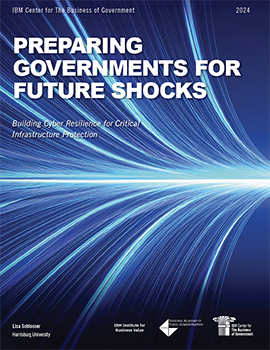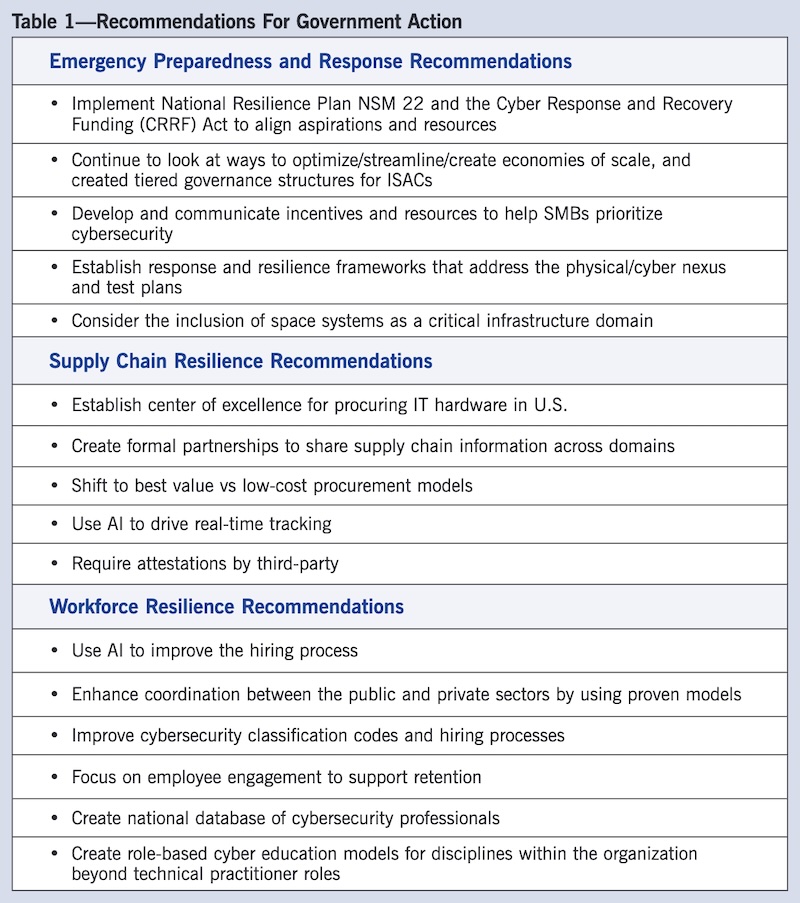
Protecting Our Community: Actions to Build Cyber Resilience in Critical Infrastructure

Cybersecurity and government operations leaders gathered recently for an interactive roundtable discussion on “Building Cyber Resilience for Critical Infrastructure Protection.” Convened by the IBM Center for The Business of Government, the IBM Institute for Business Value, and the National Academy of Public Administration, the roundtable identified practical actions that government agencies can take to keep the public safe and secure.
These insights appear in a new report, “Preparing Governments for Future Shocks: Building Cyber Resilience for Critical Infrastructure Protection,” authored by Lisa Schlosser, current Cyber Security Advisor with Harrisburg University and former Federal Deputy Chief Information Officer/Deputy Associate Administrator with the Office of Management and Budget. The report provides timely perspectives for government leaders and stakeholders during Cybersecurity Awareness Month.
Critical infrastructure - which includes essential services that support the energy grid and clean water distribution, supply chain management, workforce development, and emergency response – is increasingly a target for cyberattacks. The report highlights cyber resilience strategies that include introducing robust cybersecurity measures to prevent attacks and the ability to quickly detect, respond to, and recover from incidents ensuring continuity of operations and minimizing impact of attacks. By enhancing cyber resilience, government agencies can continue to deliver services efficiently and effectively to the public.
The report presents challenges, best practices, and opportunities for ensuring strong cyber protections for emergency preparedness and response, supply chain resilience, and the workforce. Table 1 presents the practical actions that roundtable participants recommend government agencies follow to best serve the public.
This event is a part of the Future Shocks initiative whose objective is to identify and share strategies and practical actions for government organizations to build resilience and better respond to unexpected challenges and major disruptions.




